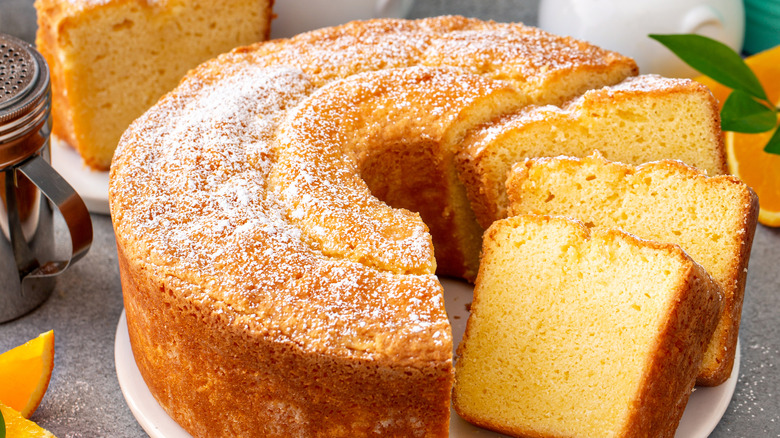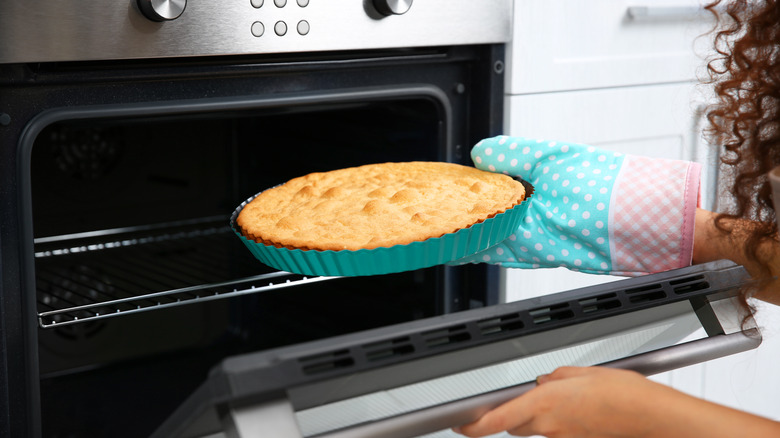You Should Rotate Your Pan When Baking A Cake, Here's Why
Baking can seem a bit like a science experiment with all the careful measuring and mixing it requires. Although close attention to detail is key in baking the perfect cake, sometimes a finicky oven has other plans. This is precisely why you should rotate your pans when baking a cake.
According to Real Simple, rotating your pans is a good idea to make sure your cake bakes evenly. As Bon Appétit explains, by turning pans 180 degrees, heat will be better dispersed throughout the pan instead of being concentrated in one area. This technique will help deal with the qualms of a wonky oven and prevent burning and keep the cake moist.
If there are several staggered pans in the oven, make sure to switch their position between racks, as this will allow the heat to circulate better and keep the cake from uneven browning (via Cook's Illustrated).
You must only rotate the pans once the center of the cake has set — usually about two-thirds of the way through baking —to avoid deflating or sinking (via Food Network).
The science behind rotating pans
Since ovens tend to have hot spots, certain corners can be warmer than others, which is why leaving a cake in the same position during the entire baking process can cause it to burn in one spot but be underbaked in another (via Bon Appétit).
Similarly, because ovens work by trapping heat, the success of a cake also relies on keeping your oven door closed. The longer the oven door is open, the more heat can escape, affecting baking times and the browning of your cake. This is why speed is critical when rotating cake pans.
While cakes can benefit from being rotated, pies, tarts, trays of cookies, and even savory dishes like roasted vegetables or casserole can also be rotated to brown, cook, or crisp more evenly. However, Cook's Illustrated recommends avoiding this technique for delicate cakes that rely on steam like soufflés.

